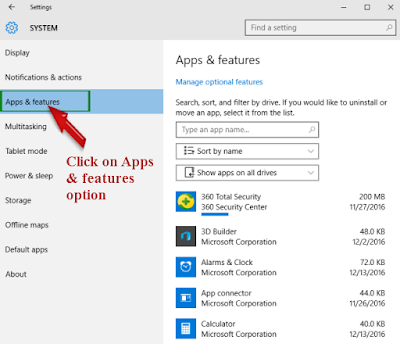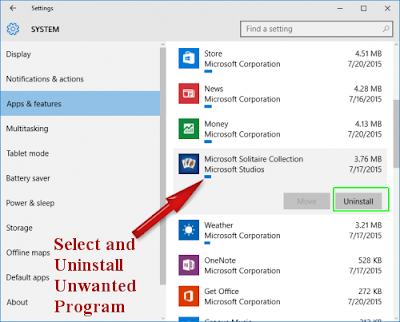Step By Step Guide To Uninstall Local Ransomware
Local Ransomware is responsible for infecting dll files msconf.dll 5.1.2600.5512, credui.dll 5.1.2600.1106, netcfgx.dll 6.1.7600.16385, msadcs.dll 6.1.7600.16385, mfc40.dll 4.1.0.6151, snmpsmir.dll 6.0.6002.18005, usrsdpia.dll 4.11.21.0, jsproxy.dll 7.0.6000.16982, dpserial.dll 0, WsmRes.dll 6.0.6000.16386, netman.dll 6.0.6001.18000Easy Steps To Remove Local Ransomware From Infected Operating System
Local Ransomware is deemed as Operating System malware which is programmed to destroy your data and other important documents stored on Operating System. This type of malware enter your Operating System in many ways. It generally employs deceptive methods to enter the Operating System like spam emails, infected media devices, peer to peer file sharing, free downloads and so on. Local Ransomware once installed on your Operating System, starts it execution automatically. You will not be able to know that virus has attacked your Operating System because it silently enters your Operating System.
After invading your Operating System, it can make your files and other documents inaccessible. It can make your Operating System slow and sluggish. Applications or programs may freeze or hang. Therefore, it is very important to Remove this malware if you find it on your Operating System.
Part 1 : Steps To Open Your Operating System In Safe Mode
Part 2 : Remove Local Ransomware From Internet Explorer
Part 3 : Remove Local Ransomware From Task Manager
Part 4 : Remove Local Ransomware From Registry Entry
Part 5 : Remove Local Ransomware From Control Panel
Complete Uninstallation Guide For Local Ransomware From Operating System
Part 1 : Steps To Open Your Operating System In Safe Mode
In Windows XP/Vista/7 :
- Goto Start menu - > Restart button.

- Continue to press F8 button when your Operating System starts booting-up.
- Here, you will find Advance boot menu window on your Operating System screen.

- Select Safe Mode With Networking Option and hit Enter key.

In Windows 8/10 :
- Click on Start menu press Shift key and click on Restart button.

- Select Troubleshoot option -> Advanced.
- Click on Startup Settings.

- Select Enable Safe Mode option.
- Click Restart button.

- Press F5 button to use Safe Mode With Networking option.

Part 2 : Remove Local Ransomware From Internet Explorer
Remove Local Ransomware From Internet Explorer
- You can click on gear icon present at the right-top corner of the browser to open menu.
- Click on Manage Add-ons.
- Select Toolbars and Extensions tab..
- Select unwanted add-ons particularly related to Local Ransomware.
- Click on Disable button.
- Click on More information button.
- At last, click on Remove button to finally Remove the virus.

Remove Local Ransomware From Mozilla Firefox
- Launch Mozilla Firefox browser on your Operating System.
- Click on Menu button at the top right corner of the browser.
- Click Add-ons.
- Goto Add-ons Manager tab.
- In the Add-ons Manager tab, select Extensions or Appearance panel.
- Select Local Ransomware add-ons you want to Remove.
- Click the Remove button and restart your Operating System if any pop up asks you to restart.

Remove Local Ransomware From Google Chrome
- Click on gear icon present at the top right corner of the window to open Chrome menu.
- Click on the Tools option - > Extension tab.
- Locate unwanted extensions related to Local Ransomware.
- At last, click on trash bin icon to Remove Local Ransomware.

Remove Local Ransomware From Microsoft Edge
- Click on More (...) icon at the top right corner and goto Settings option.

- Here, click on A specific page or pages option under the Open with option.
- Select Custom and enter URL which you want to set as your browser's default homepage.

Part 3 : Remove Local Ransomware From Task Manager
- Press ALT+Ctrl+Del keys simultaneously.
- Select and click on Task manager option.
- Locate out unwanted process.
- Click on End Task button.

Part 4 : Remove Local Ransomware From Registry Entry
- Press Win + R keys altogether to open run dialog box.

- Type regedit in the dialog box.
- Press OK button.
- Select and Remove entries related to Local Ransomware.
HKEY_LOCAL_MACHINESYSTEMCurrentControlSetServicesWpm
HKEY_CURRENT_USERSoftwareMicrosoftInternet ExplorerMain “Default_Page_URL”
HKEY_LOCAL_Machine\Software\ClassesLocal Ransomware
HKEY_CURRENT_USER\Software\Microsoft\Windows\CurrentVersion\Run “.exe”
HKCU\Software\Microsoft\Windows\CurrentVersion\Internet Settings\random
HKEY_LOCAL_MACHINE\SOFTWARE\Microsoft\Windows\CurrentVersion\run\random
HKEY_CURRENT_USER\Software\Microsoft\Windows\CurrentVersion\Internet Settings “CertificateRevocation” = ’0
Part 5 : Remove Local Ransomware From Control Panel
Remove Local Ransomware From Windows XP
- Click on Start icon. A list will be appeared.
- Click on Control Panel.

- Click on Add or Remove programs option.

- Select and Remove unwanted programs running on your Operating System.
Remove Local Ransomware From Windows 7
- Click on Start button.
- Click on Control Panel present in start menu.
- Click on Uninstall a Program.

- Then, Remove malicious programs running in your Operating System.

Remove Local Ransomware From Windows 8
- Press Win+R button simultaneously to open Run dialog box.

- Type control panel in Run dialog box.

- Press Enter key to open Control Panel window.
- Click on Uninstall a Program.

- Right-click on Local Ransomware and its related programs.
- Click on Uninstall.
Remove Local Ransomware From Windows 10
- Click on Start button and choose Settings option.
- Click on System option -> Apps and Features.

- Under Apps and Features tab, locate undesirable program.
- Click on Uninstall button.


Nice Post. This is one of the easily understandable Local Ransomware removal guides that I have come across on internet. Thousands of computer users around the world have fallen victim to the nasty malware. I hope your post helps the impacted people in need.
ReplyDelete